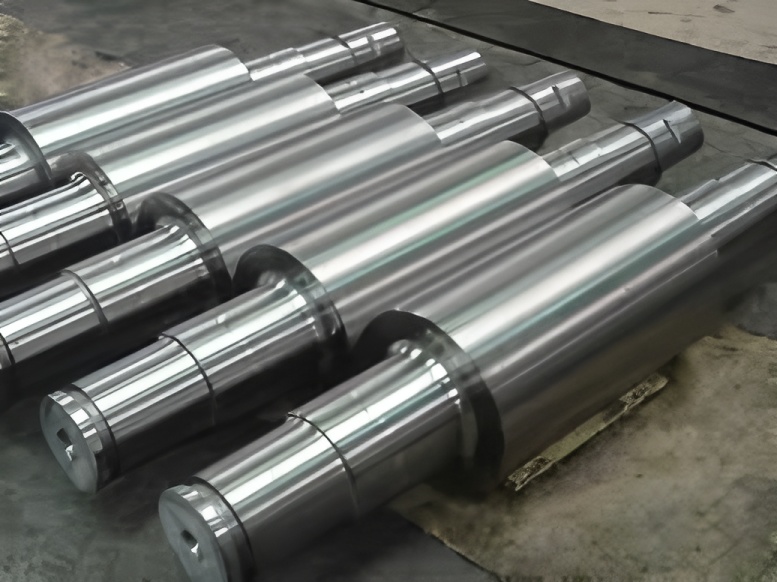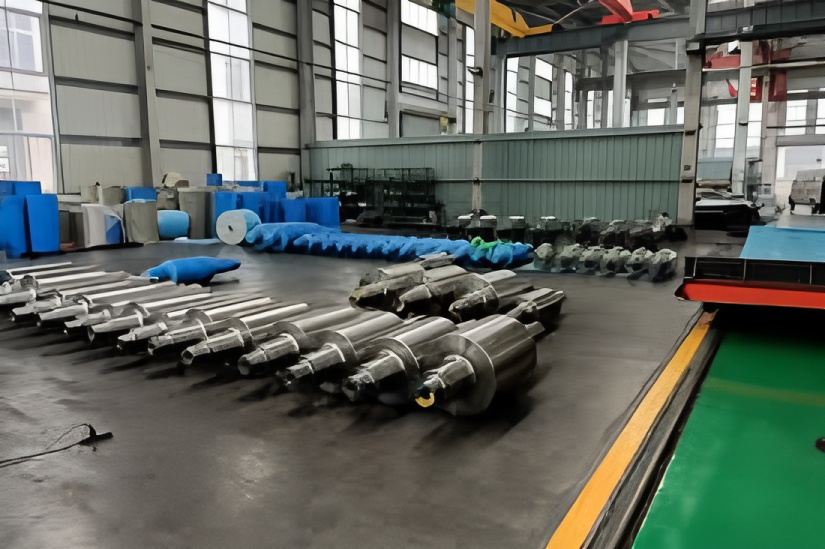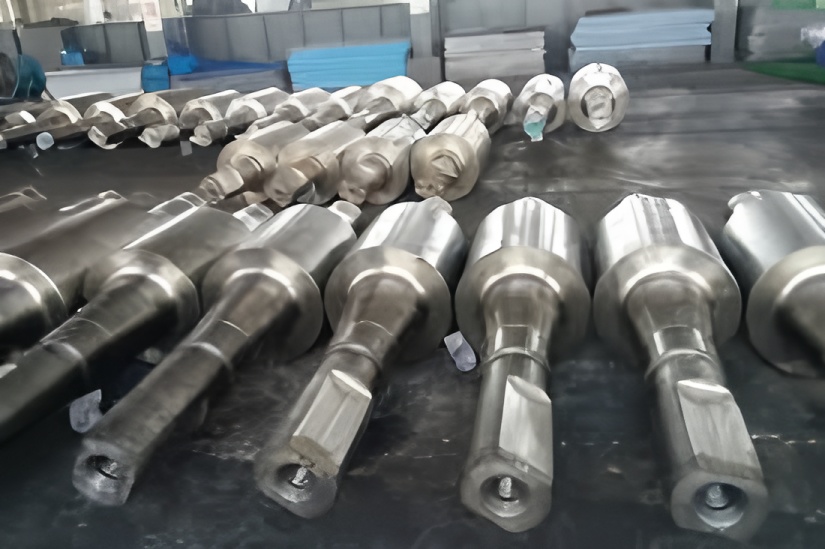Steel mill rolls are in direct contact with steel strips and serve as vital tools in hot rolling production. Reducing roll consumption can effectively lower production costs and increase benefits, while also improving mill operation rates and ensuring the surface quality of hot-rolled products. In the production of hot-rolled steel strips, roll consumption is particularly significant. Therefore, identifying measures to reduce roll consumption and extend roll life is of great importance to hot-rolled steel strip production.

Mill Rolls Manufacturers
Optimizing Roll Changing Cycle
Roughing Roller
The original roughing roll changing cycle was 2.5–3.8 wt. Based on this, the cycle was gradually extended, and comparisons were made regarding roll wear, strip shape, and surface quality. The current roll changing cycle is stabilized at 3.8–4.5 wt, which does not affect strip shape or surface quality and extends the service life of the rolls.
Finishing Roller
The speeds of the F1–F7 rolls vary significantly, leading to differing degrees of wear on the backup rolls. The original one-size-fits-all roll changing cycle of 10–15 wt was not reasonable. The current roll changing cycle is detailed in Table 1:
Since adopting segmented roll changing, not only has the rolling volume increased by approximately 14.94%, thereby extending roll service life, but statistical data also show a reduction in wave shape issues when rolling thin specifications at the end of the roll’s usage cycle.
Correct Methods for Handling Rolling Accidents
Severe rolling accidents directly increase roll consumption, and proper handling of accident rolls is key to reducing this consumption.
Stocking Accident
When a stocking accident occurs, cooling water must be stopped immediately, and the upper roll should be lifted to prevent contact with the strip. After removing the strip, the roll must be changed and cooled slowly. If a roll change is not immediately possible, the work roll should idle for 5–10 minutes without cooling water (provided cracking is not severe) to allow even temperature diffusion before resuming normal rolling.
Steel Sticking Accident
First, remove the stuck steel. Then, conduct a detailed inspection of the affected area, including hardness checks, crack detection, and other non-destructive tests. The affected area must be removed to ensure uniform surface hardness and eliminate cracks.
Steel Rolling Mill Rolls
Innovative Countermeasures for Grinding Roll Defects
Timely and correct handling of rolls after rolling accidents can minimize unnecessary damage, extend service life, and reduce consumption.
Below are several common methods for addressing roll accidents:
Hot Cracks
Hot cracks are often caused by rapid cooling or heating after stocking or piling accidents.
Treatment: For R1 and F1–F4 rolls, hot cracks can be managed online by ensuring smooth rolling. The cracks will close (closed cracks do not extend but diminish over time) and gradually disappear.
Roller Steel Sticking
Steel sticking, tail swinging, or piling accidents can cause strips to adhere to the roll.
Treatment: If the adhered steel is severe, overlapping, and exceeds 3mm in thickness, it must be turned off. After removal, inspect the roll surface for cracks and peeling. Determine the cutting depth based on the damage level to eliminate defects without excessive roll consumption.
Peeling at the Working Roll Edge
Peeling at the roll edge is caused by stress concentration on the roll shoulder.
Treatment: Since the roll shoulder does not directly contact the steel plate, the cracked or peeling area can be removed, and a chamfer can be ground. Adjusting the chamfering method and angle of the supporting roll can improve stress distribution.
Backup Roll Defects
Backup rolls do not directly contact the strip and have lower hardness than work rolls but are more expensive. Conventional grinding methods are often unsuitable.
Treatment: For edge damage, increase the end chamfer length during grinding. If defects persist, use an angle grinder to smooth the area and prevent further peeling. For mid-roll damage, grind conventionally and then use an angle grinder to smooth the defect and its surroundings.
Key Points in Rough Rolling Process Control
Adjusting Roll Profile
Based on actual production conditions, F1–F4 rolls have been changed from concave rolls to HVC rolls. The negative crown of F5–F7 rolls has been increased to improve stress distribution on the roll surface. This enhances strip shape control and reduces roll consumption.
Other Ways to Reduce Roll Wear
Conduct training on handling various rolling accidents to improve emergency response speed and minimize roll damage.
Establish reasonable roll inspection standards to ensure roll quality and reduce unnecessary losses.
Select reputable roll manufacturers like HANI to customize high-quality rolls with materials and hardness suited to production characteristics.
After production stabilizes, consider using high-speed steel rolls for front-section finishing work rolls to further reduce consumption.

Conclusion
The optimized HVC roll profile and adjusted negative crown not only improve stress distribution on the roll surface but also enhance the ability to control strip crown, ensuring product quality. Adjusting the roll changing cycle, responding effectively to rolling accidents, and properly handling accident rolls all contribute to increased rolling volume per roll and extended service life. These measures also reduce unnecessary grinding, lowering employee labor intensity.


